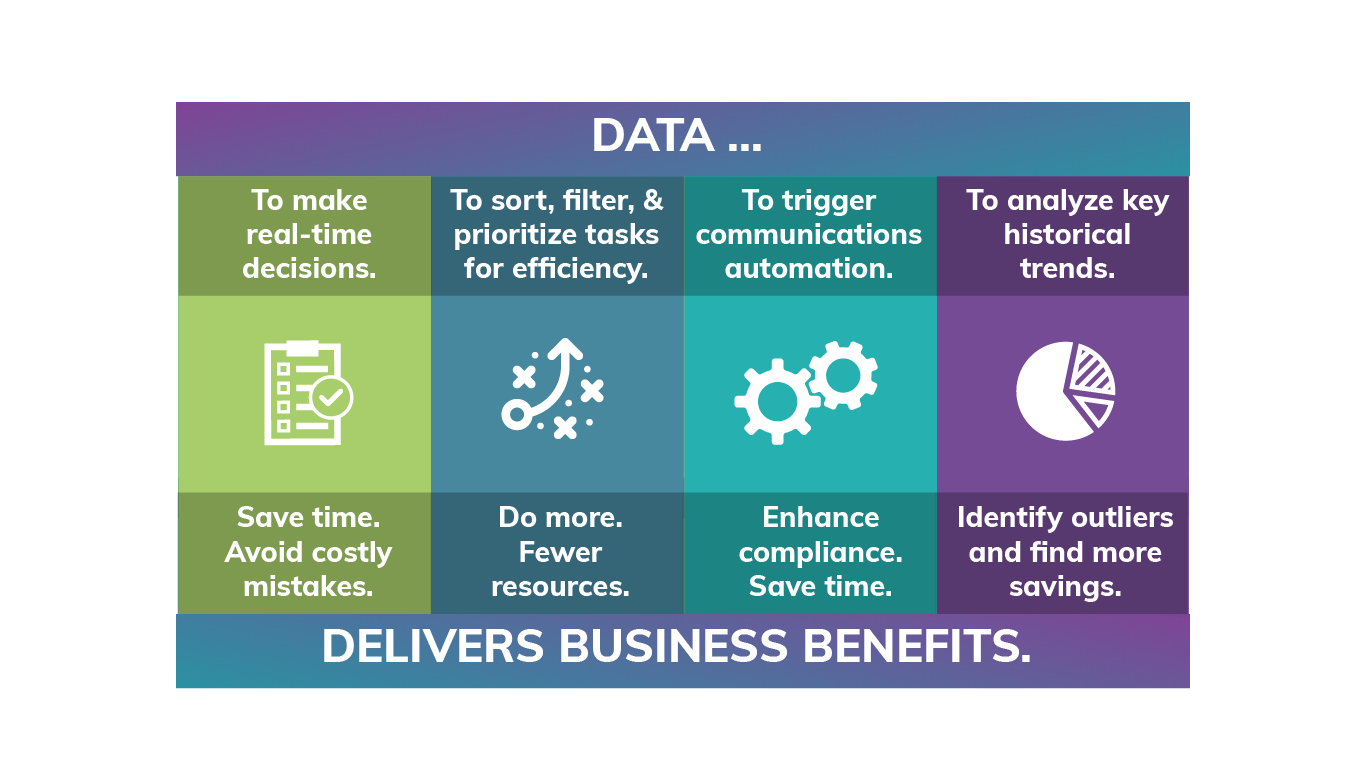Data to Power Your Facilities Management Success
The role of the iconic “facility” for multi-location enterprises is going through a transformation. Facilities management data powers the successful business outcomes that are critical in today’s competitive environments.
Not all data is alike. The data that facilities management teams and their businesses need to boost success needs to be actionable, contextual, and accessible.
Not all data is alike. The data that facilities management teams and their businesses need to boost success needs to be actionable, contextual, and accessible.
Data powers facilities management success.
Why do teams need data to support transformation?
The pace of change is accelerating.
Disruption is everywhere.
Transformation is taking many forms.
An article recently published by Forbes highlighted results from a survey that suggests several key drivers that became significant during the tumultuous 2020, are likely to be increasingly important going forward. All of them bring new challenges and opportunities to the world of facilities management.
Among the drivers likely to continue to have an impact on facilities that were noted:
- Omnichannel – Offline is online, online is offline
- AI (Artificial Intelligence) increasingly customer-facing across the retail industry
- Autonomous Deliveries and Unique Fulfilment Models
Data alone is not enough. Data must be captured and accessible for meaningful analytics to occur. Facilities Management, formerly seen by some as a back-office / necessary commodity role and cost center, is positioned to play a major role as these drivers take shape. In some cases, an efficient and effective facilities team can even be “the hero” – in helping the business successfully navigate this transformation.
The right toolkit for facilities management is a must.
However, like any successful hero, the right tool kit is a must. For the facility management teams of today, the tool kit must be grounded in rich contextual facilities data and contain:
Smart Automation
Effective Communications
and… Solutions that Enable Adaptation to the Dynamic Business Landscape.
Data is at the epicenter of how this transformation drama is playing out. And data can be the lubricant that makes Smart Automation, Effective Communication, and Agile Adaptation both actionable and valuable. Facilities management data that can be turned into the engine for data analytics can be at the crux of boosting the brand and the bottom line at the same time.
If you think about how a facilities manager needs to leverage analytics, it takes multiple forms. They need to access and use available data within a facilities management software solution to make good decisions.
Real-Time Decisions. Sometimes the analytics are done in real-time to make decisions on how to prioritize activities.
Analytics Informing Automation. Other times, they want to apply algorithmic business logic to trigger actions automatically. “When this WO remains open for more than x days without status update, alert FM.”
Trend Analysis. Other times, the analytics provide a means to look at historical trends and identify outliers or areas where improvements could be made to avoid costs or improve KPI metrics in the future.

How the data and data analytics tools within the software support decisions are really what matters. And there are numerous ways in which this type of rich contextual data helps facilities teams save money. Just a few examples include:
- Contextual data combined enables smart automation via meaningful business logic to eliminate manual compliance reviews of invoices prior to processing ( https://fexa.io/facilities-management-invoice-requirement-compliance/ )
- Custom fields for unique facilities data that denote requirements for different treatment – such as disaster-related structural damage or asset damage work that should be diverted to the landlord.
- Programs within the software that correlates data within preventive maintenance scheduled work with non-urgent reactive maintenance at the same location to avoid unnecessary duplication of vendor on-site expenses.
- Business logic that reverts non-emergency work to appropriately skilled internal tech resources employed by the organization with idle time.
- Data validation that assures that duplicate work orders are not initiated by different individuals identifying the same issue, avoiding multiple dispatch expenses.
- Asset management data that assures technicians know and have on the truck the appropriate sub-components – avoiding multiple trips, extended outages, and costs.
- Dashboards to track KPIs for provider compliance at a glance to assure that the right providers who provide the best value inclusive of price and quality are engaged.
- The list goes on… an on… and on…
The truth of the matter is that when it comes to the important work of Facilities Management, facilities data combined with effective analytics tools can be a powerful anecdote that helps businesses thrive and survive well into the future.
Let’s discuss how you can start enhancing your success with better data?
Let’s discuss how you can start enhancing your success with better data?
Let’s discuss how you can start enhancing your success with better data?
CORPORATE OFFICE
157-200 Bridgeton Pike Suite 163B
Mullica Hill, NJ 08062
Phone
(888) 615-0403
Quick Links
Industries
Resources
Blog
Events
About Us
Contact Us
Careers
Terms of Service
CORPORATE OFFICE
157-200 Bridgeton Pike Suite 163B
Mullica Hill, NJ 08062
Phone
(888) 615-0403
hello@fexa.io
Quick Links
Resources
Fexa Careers



